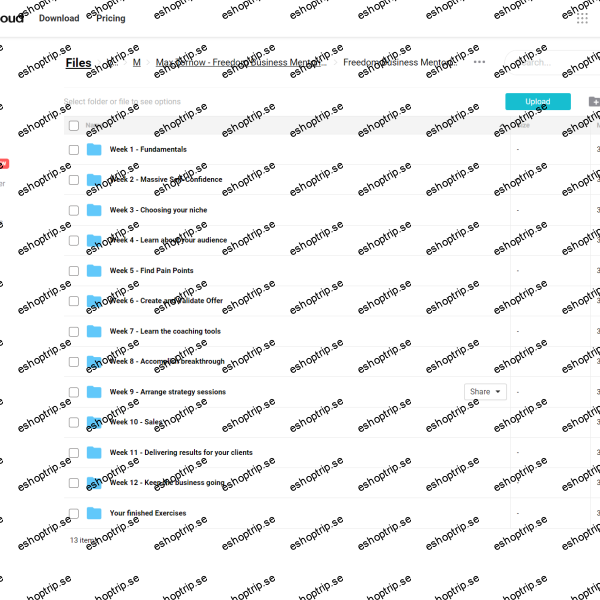Published 9/2022
MP4 | Video: h264, 1280×720 | Audio: AAC, 44.1 KHz
Language: English | Size: 1.01 GB | Duration: 2h 22m
Cleared fundamentals are necessary to make an impact in your MES projects.
What you’ll learn
Manufacturing Execution System (MES) Overview
Capabilities of MES
Role played by each department within manufacturing plant for MES implementation
Typical project team structure
Common reasons for failure of MES implementation
Basic thumb rules for success function and use of MES (Post implementation)
Requirements
No prerequisites
Description
Manufacturing Execution System (MES) is such a vast field that includes many complex concepts, software system functions, business topics, cultural change etc. – and on top of it – all closely interconnected to each other.MES has been around since decades but it is still not well understood and widely used system. Although the trends in the past decade show that the awareness about its benefits, is increasing – although still not utilized to its full potential. There are many reasons why an MES implementation project has longer lead times. To start understanding those, one needs to start understanding the fundamentals of MES.Sumit Patwardhan is an experienced professional in MES implementation projects with exposure to industries such as Consumer Packaged Goods, Automotive Components Manufacturing and Life Sciences for over 11 years. He has completed variety of projects in fast paced environments fulfilling challenging customer demands. This course includes all of his experiences and knowledge so that you can get all fundamental information at one place.This course is intended for those who are new to the MES world or have a little background and would like to learn more. It covers all the fundamental information you need to know, before starting the MES implementation journey or choose the right career path or simply make an impact in those project discussions!The course overview includes:History and benefits of MESTypes of MES toolsCapabilities touched by MES at manufacturing operations level (referencing the MESA model)Project stakeholders at Manufacturer’s side and their contribution to MES projectProject team structure catering based on the MES tool typeCommon reasons for failure of MES implementationBasic thumb rules for successful function and use of MES (post implementation)and lots lots more!By learning fundamentals, you’ll start understanding different aspects to consider which will help you to work effectively in your MES implementation project(s).
Overview
Section 1: Course Introduction
Lecture 1 Section 1 Introduction
Lecture 2 Course Introduction
Section 2: Introduction: Manufacturing Execution System (MES)
Lecture 3 Section 2 Introduction
Lecture 4 Introduction to MES
Section 3: Types of MES Tools
Lecture 5 Section 3 Introduction
Lecture 6 Types of MES Tools
Lecture 7 Types of MES Tools: Advantages and Disadvantages
Section 4: MES: Benefits
Lecture 8 Section 4 Introduction
Lecture 9 MES: Benefits
Section 5: MES: Capabilities
Lecture 10 Section 5 Introduction
Lecture 11 MES: Capabilities
Section 6: MES Capabilities and Responsible Department
Lecture 12 Section 6 Introduction
Lecture 13 MES Capabilities and Responsible Department
Lecture 14 Department Function and Role: Details
Lecture 15 Department: Warehouse
Lecture 16 Department: Production
Lecture 17 Department: Quality Assurance
Lecture 18 Department: Engineering/ Process
Lecture 19 Department: Instrumentation/ Maintenance
Lecture 20 Department: Information Technology
Section 7: Project Team Structure
Lecture 21 Section 7 Introduction
Lecture 22 Project Team Structure
Lecture 23 Role Definition: Architect and Consultant
Section 8: Integration Capabilities
Lecture 24 Section 8 Introduction
Lecture 25 MES: Integration Capability
Lecture 26 Integration with L2 and L4 Systems
Lecture 27 Typical Data Exchange: Level 4 – MES
Lecture 28 Typical Data Exchange: MES – Level 2
Lecture 29 Typical Data Acquisition from Vision System
Section 9: Common Reasons for Failure of MES Implementation Project
Lecture 30 Section 9 Introduction
Lecture 31 Common Reasons for Failure of MES Implementation Project
Section 10: Basic Thumb Rules for Successful Function and Use of MES (Post Implementation)
Lecture 32 Section 10 Introduction
Lecture 33 Basic Thumb Rules for Successful Function and Use of MES (Post Implementation)
Section 11: Course Summary
Lecture 34 Section 11 Introduction
Lecture 35 Summary of Learnings
Novice: Anyone who wants to know about MES and has no background,Beginner: Anyone who has a little background of MES through professional experience or education/ training
HOMEPAGE
https://anonymz.com/?https://www.udemy.com/course/manufacturing-execution-system-mes-fundamentals/












Reviews
There are no reviews yet.